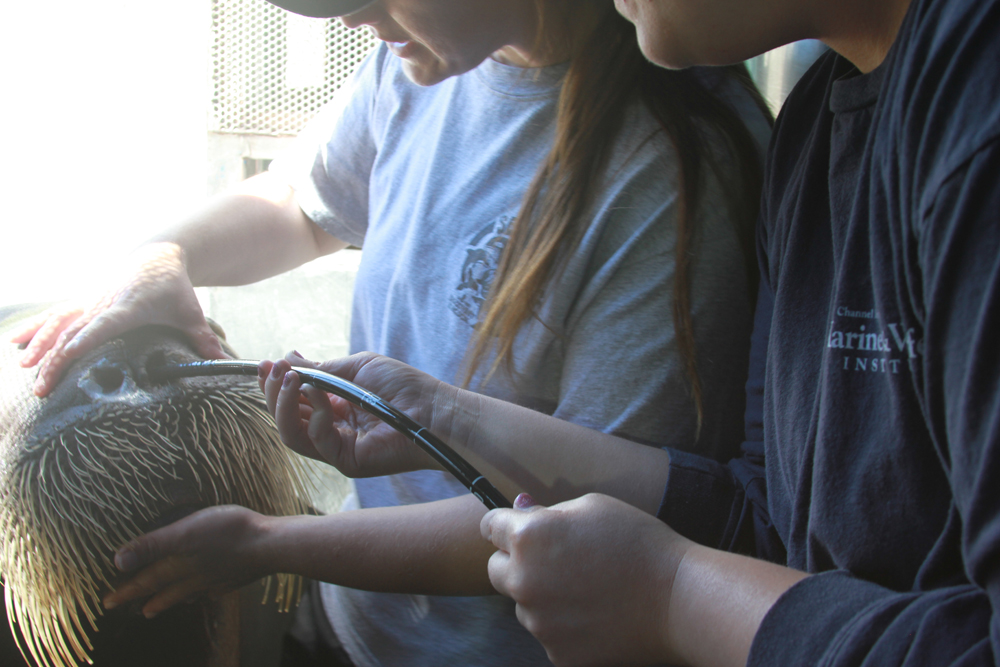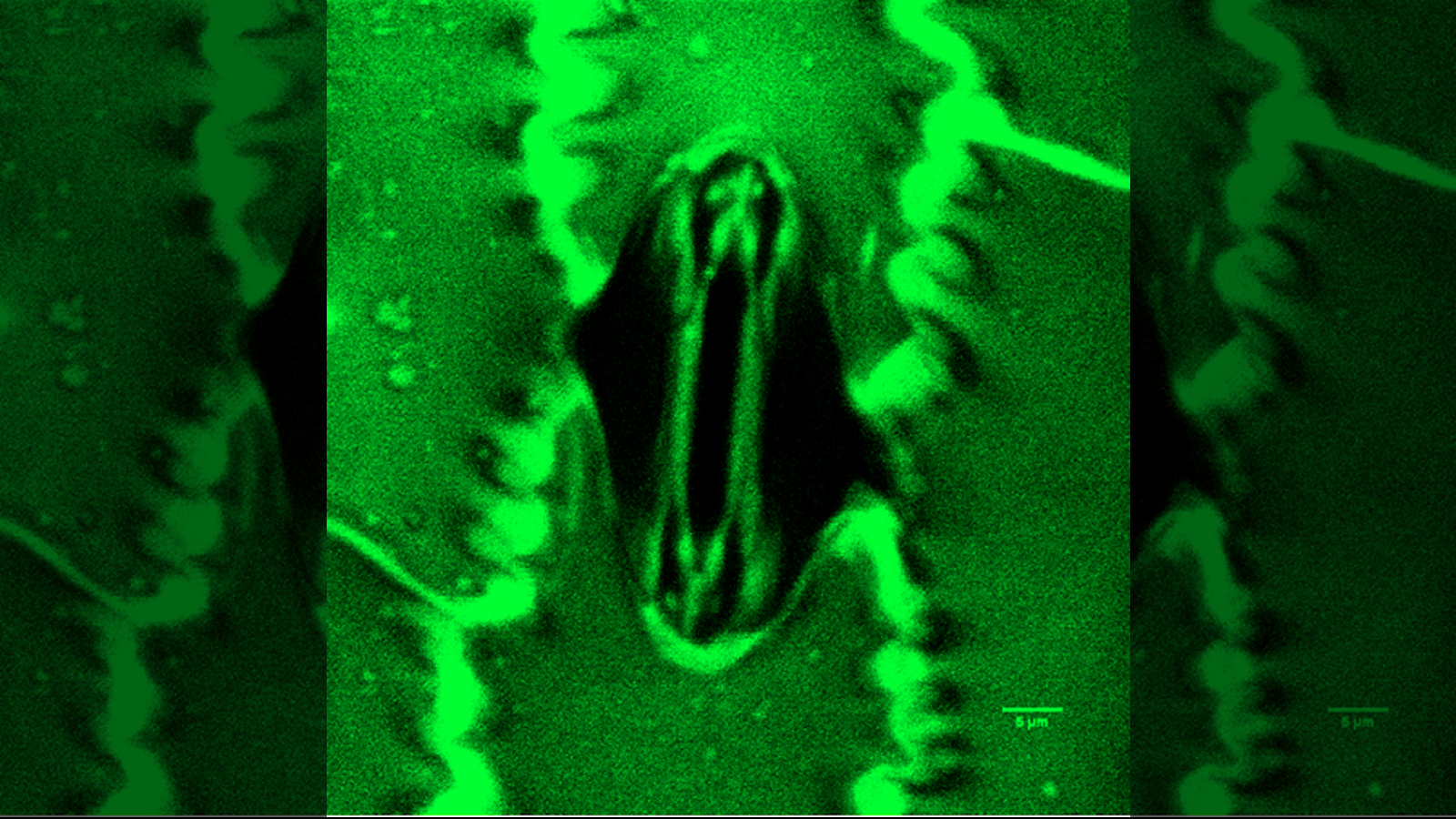Walrus's Runny Nose Had Surprising Source (It Wasn't the Common Cold)

No one likes a runny nose. But for one stuffed-up walrus, rivers of snot signaled a rare ailment.
Siku, a 22-year-old female walrus at Six Flags Discovery Kingdom in Vallejo, California, was orphaned as a pup in Alaska. At the age of 17, Siku got sick. Her nose was running with a thick, yellow discharge, a red flag that something was wrong, said her veterinarian, Vanessa Fravel.
"They have lots of snot, but it's usually clear snot," Fravel told Live Science. [Infographic: What Your Snot Says About You]
Probing the nose
Tests revealed a slightly elevated level of white blood cells, a sign of an immune response. Siku was subsequently put on antibiotics for an unrelated eye infection, and the snot situation improved. But when the antibiotic course ended, Siku's nostrils soon filled with yellowish discharge again. The walrus soon became lethargic and showed a decreased appetite, Fravel and her colleagues reported Jan. 12 in the journal Veterinary Record Case Reports.
Fravel knew she needed to see what was going on inside the walrus's nose. But walrus anesthesia is a risky business. For one thing, it's hard to sedate such a large animal, particularly one that doesn't take well to being restrained, Fravel said. And all that blubber keeps anesthesiologists from being able to find a good vein to deliver the anesthetic.
So Fravel asked the animal trainers at Six Flags to get Siku — and two fellow walruses who lived with her — to accept a rhinoscopy, or nose scope, while awake. It was a slow process, she said. Trainers first taught the walruses to open their nostrils upon request (walruses often keep their noses closed, especially for diving, Fravel said). Next, the animals got rewards for letting trainers stick a long cotton swab into their noses. Gradually, the trainers acclimatized the walruses to accepting tubing stuck 1 to 2 inches (3 to 5 centimeters) into their nostrils. [See images of how Siku the walrus's runny nose was treated]
Get the world’s most fascinating discoveries delivered straight to your inbox.
After a month, the walruses were ready for a real scope. Immediately upon collecting a sample from inside Siku's nose, Fravel saw tiny, sticklike figures and realized the problem: nasal mites.
The discovery of the creepy-crawlies in Siku's nose was actually a relief.
"I was like, we can treat this! It's not cancer!" Fravel said.
Nose unknowns
Fravel was well-acquainted with nasal mites from her time working at Sausalito's Marine Mammal Center, where she often conducted necropsies (the animal version of autopsies) on sea lions. Nasal mites are a common problem for seals and sea lions, she said, but there's only been one report of nasal mites on walruses in the wild, from the 1940s. There are also only two other known cases of a walrus in captivity getting nasal mites. One occurred at a zoo in Germany. Another was more notable for what happened after the walrus got mites: It somehow got spittle in an aquarium visitor's eye and infected the person with the parasite. (The eye was irritated, but otherwise fine, according to the report of that case published in the Journal of Parasitology in 1985.
Parasitology lab results revealed the mites to be of the species Orthohalarachne attenuate, the kind that typically infest the noses of seals and sea lions. The other two walruses housed with Siku had mites, too, though only about half to a third as many as Siku, and neither showed symptoms. Fravel and her colleagues treated all three with the anti-parasitic medicine ivermectin.
How the walruses got the mites remains a mystery, Fravel said. It's possible that they'd all harbored a population of them since infancy. Siku had also been on breeding loan at Sea World and could have caught the parasites there. Or, the walruses could have caught the parasites at home. Trainers at Six Flags put their hands close to the noses of animals while working with them, Fravel said, and there are wild-born sea lions at the park. A trainer working with an infected sea lion could have forgotten to wash his or her hands before heading over to the walruses.
As a result of the parasite infection, "we're definitely enforcing the hand-washing more," Fravel said.
Siku had another bout of mites last year, perhaps due to a population that survived deep in her sinuses, beyond the reach of the scope, Fravel said. Another treatment with ivermectin cleared it up, and now all three walruses get a precautionary ivermectin treatment each year, she said.
And Siku's health status now?
"She's great," Fravel said. "She's cured."
Follow Stephanie Pappas on Twitter and Google+. Follow us @livescience, Facebook & Google+. Original article on Live Science.

Stephanie Pappas is a contributing writer for Live Science, covering topics ranging from geoscience to archaeology to the human brain and behavior. She was previously a senior writer for Live Science but is now a freelancer based in Denver, Colorado, and regularly contributes to Scientific American and The Monitor, the monthly magazine of the American Psychological Association. Stephanie received a bachelor's degree in psychology from the University of South Carolina and a graduate certificate in science communication from the University of California, Santa Cruz.
 Live Science Plus
Live Science Plus





